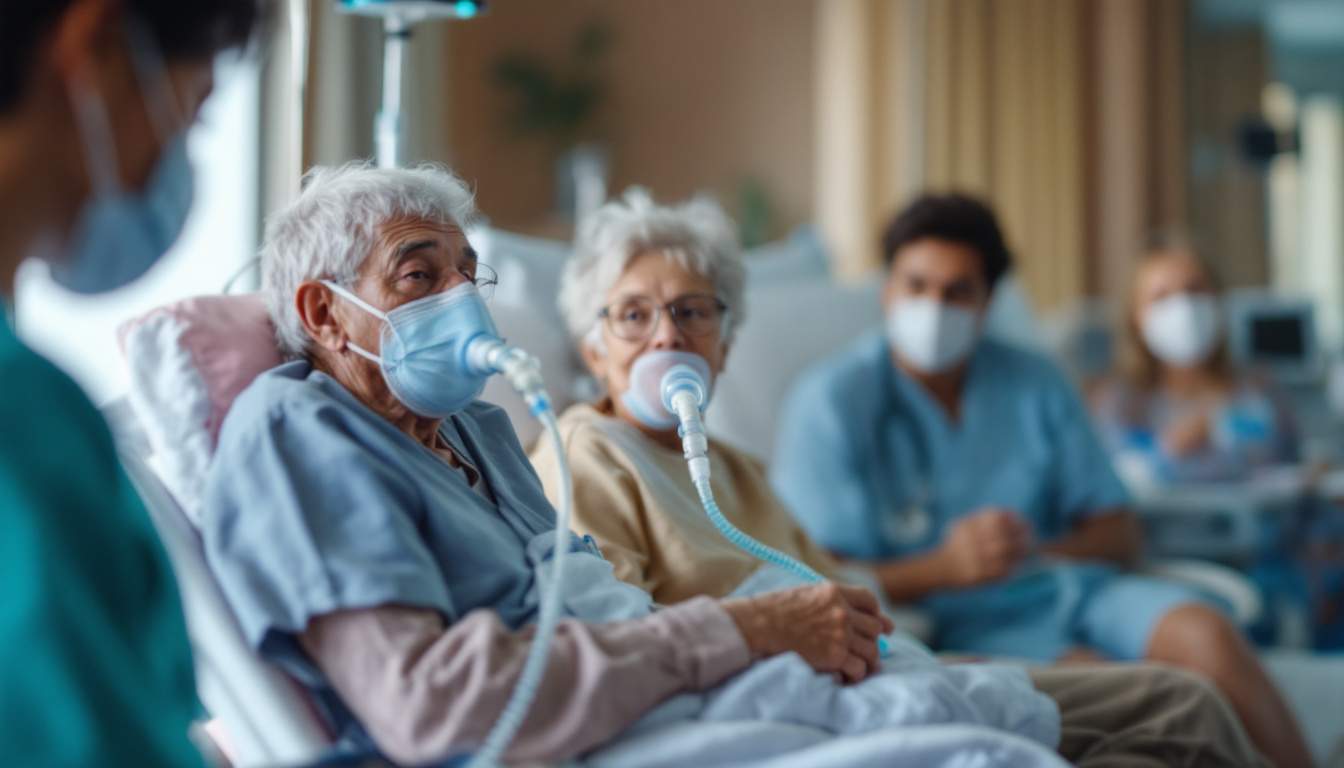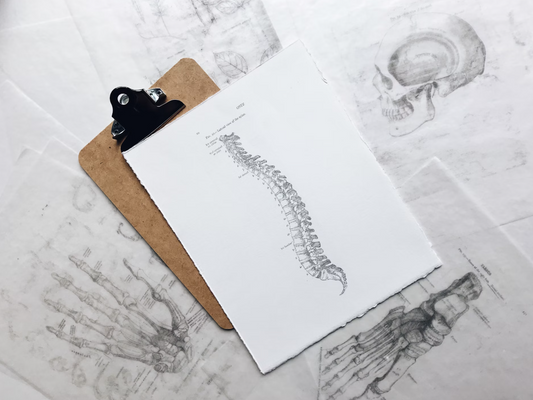Glossary: What is Oxygen Therapy
Oxygen therapy is a medical treatment that provides supplemental oxygen to patients who have difficulty breathing or maintaining adequate blood oxygen levels. This therapy can be critical for treating various medical conditions and can enhance overall quality of life.
Understanding Oxygen Therapy
The Basics of Oxygen Therapy
At its core, oxygen therapy involves increasing the amount of oxygen available to a patient. This can be done through various methods, such as nasal cannulas, oxygen masks, or even oxygen tanks. The primary goal is to improve oxygen saturation in the blood, thereby ensuring that vital organs receive the oxygen they need to function effectively.
Oxygen therapy is tailored to meet each individual's specific needs, making it essential for healthcare providers to evaluate the patient's oxygen levels regularly. It can be a temporary treatment for acute conditions or a long-term solution for chronic diseases. For instance, patients with chronic obstructive pulmonary disease (COPD) may require continuous oxygen therapy to maintain optimal oxygen saturation, while those recovering from surgery may only need it for a short period during their recovery phase.
The Medical Importance of Oxygen Therapy
Oxygen is crucial for cellular metabolism. Every cell in the human body requires oxygen to produce energy. Without adequate oxygen, cells begin to function inefficiently, leading to symptoms such as fatigue, confusion, and shortness of breath. Medical professionals often use oxygen therapy to treat respiratory ailments, heart diseases, and even conditions like sleep apnea.
Moreover, oxygen therapy is not just about treating existing conditions; it can also be a preventative measure. By ensuring adequate oxygen levels, patients can avoid complications related to hypoxemia, a medical term for low blood oxygen levels. In emergency situations, such as during a heart attack or severe asthma attack, rapid administration of oxygen can be life-saving, helping to stabilize the patient and prevent further damage to vital organs. Additionally, in the context of post-operative care, oxygen therapy can facilitate quicker recovery by enhancing tissue oxygenation, which is critical for healing and reducing the risk of infection.
Different Types of Oxygen Therapy
Hyperbaric Oxygen Therapy
Hyperbaric oxygen therapy (HBOT) involves breathing pure oxygen in a pressurized environment. This method helps to dissolve oxygen in body fluids, allowing it to reach areas where blood flow is restricted. HBOT is often used to treat conditions such as decompression sickness, carbon monoxide poisoning, and chronic non-healing wounds.
The pressurized environment facilitates a quick healing process and enhances the body's natural ability to fight infections. Patients undergoing HBOT often experience immediate relief from certain symptoms, making it a highly effective treatment option. The therapy typically takes place in a specialized chamber, where the pressure is increased to levels greater than that of sea level. This unique setting not only accelerates the healing of damaged tissues but also promotes the formation of new blood vessels, a process known as angiogenesis, which is crucial for recovery in various medical conditions.
Normobaric Oxygen Therapy
Normobaric oxygen therapy is the most common form of oxygen treatment and involves providing oxygen at normal atmospheric pressure. It uses devices like nasal cannulas or face masks to administer oxygen directly to the patient. This method is widely used for those with chronic obstructive pulmonary disease (COPD), cystic fibrosis, and other chronic lung diseases.
Normobaric therapy is adjustable to meet patient needs, and the delivery rate can be customized, ensuring optimal oxygen intake based on individual requirements. Regular monitoring is crucial to make necessary adjustments and track the patient's progress. In addition to its use in chronic conditions, normobaric oxygen therapy has also shown promise in acute settings, such as during surgeries or in emergency medicine, where rapid oxygenation can significantly impact patient outcomes. Furthermore, advancements in portable oxygen concentrators have made it easier for patients to maintain their oxygen therapy while leading active lives, thus improving their overall well-being.
Long-term Oxygen Therapy
Long-term oxygen therapy (LTOT) is generally prescribed for patients with chronic respiratory conditions who need oxygen at home. This therapy typically involves the continuous supply of oxygen for extended periods, sometimes 24 hours a day.
Patients requiring LTOT usually have low blood oxygen levels, and the therapy helps improve their life expectancy and quality of life by providing adequate oxygen. Regular follow-ups are essential to ensure that the oxygen levels and overall health of the patient are continuously monitored and managed. In addition to the physical benefits, LTOT can also have a profound psychological impact, as patients often report improved energy levels and a greater ability to engage in daily activities. Education on the proper use of oxygen equipment and understanding the signs of oxygen deprivation are critical components of LTOT, empowering patients to take an active role in their health management and enhancing their independence.
The Process of Oxygen Therapy
How Oxygen Therapy Works
Oxygen therapy begins with a medical evaluation. Physicians will perform tests such as pulse oximetry or arterial blood gas analysis to determine a patient's oxygen levels. Based on these evaluations, they will recommend the type, flow rate, and duration of oxygen therapy needed.
Once the oxygen delivery method is established, patients receive clear instructions on how to use the equipment safely and effectively. Education surrounding the use of oxygen therapy is critical for ensuring both the effectiveness of the treatment and the safety of the patient. This includes understanding how to recognize signs of oxygen deprivation, such as shortness of breath or increased heart rate, and knowing when to seek immediate medical attention. Additionally, patients are often educated about the importance of adhering to prescribed therapy schedules to maximize the benefits of treatment.
The Role of Oxygen in the Body
Oxygen plays a critical role in numerous physiological processes. It is vital for cellular respiration, which is the process by which cells use oxygen to produce energy from glucose. This energy fuels essential bodily functions, including movement, thought processes, and digestion.
Inadequate oxygen levels hinder these processes and can lead to severe complications, including organ dysfunction or failure. Therefore, maintaining adequate oxygenation is essential for overall health and wellness. Beyond energy production, oxygen is also crucial for the synthesis of various biomolecules and the regulation of metabolic pathways. For instance, oxygen is involved in the detoxification of harmful substances in the liver and plays a role in the immune response, helping to combat infections. Understanding the multifaceted roles of oxygen underscores the importance of oxygen therapy for individuals with respiratory conditions or other health issues that compromise oxygen availability.
Risks and Benefits of Oxygen Therapy
Potential Side Effects
While oxygen therapy is generally safe, it is not entirely free from risks. Some patients may experience side effects, including nasal irritation, dryness, or headaches. High concentrations of oxygen can also lead to oxygen toxicity, a condition that can damage lung tissue. In some cases, patients may also experience feelings of claustrophobia or anxiety, particularly if they are using a mask or other delivery device that covers their face.

Monitoring and adjusting the oxygen flow to the lowest effective level can minimize these risks. Patients must communicate any discomfort or side effects to their healthcare provider promptly. Regular follow-ups with a healthcare professional can help ensure that the therapy is tailored to the individual's needs, allowing for adjustments in flow rates or delivery methods as required. Additionally, using a humidifier can alleviate some of the dryness and irritation associated with prolonged oxygen use, making the therapy more comfortable and sustainable for patients.
Health Benefits and Improvements
The benefits of oxygen therapy far outweigh the risks for many patients. Improved oxygenation can lead to increased energy levels, better sleep quality, and an overall enhancement of daily activities. Patients often report an improved ability to perform physical tasks and a reduction in the severity of respiratory symptoms. Enhanced oxygen delivery can also support cognitive function, as the brain requires a steady supply of oxygen to operate efficiently, potentially leading to better concentration and memory retention.
Furthermore, ongoing oxygen therapy can play a significant role in improving prognosis and reducing hospitalization frequency for chronic patients. With the right management, patients can enjoy a better quality of life with oxygen therapy. Studies have shown that patients with chronic obstructive pulmonary disease (COPD) who adhere to oxygen therapy regimens experience fewer exacerbations and improved survival rates. This therapy not only aids in symptom management but also empowers patients to engage more fully in social and recreational activities, fostering a sense of independence and well-being that is crucial for mental health. As patients become more active, they may also discover new hobbies or interests, further enriching their lives beyond the confines of their respiratory challenges.
Who Needs Oxygen Therapy?
Conditions Treated with Oxygen Therapy
Oxygen therapy can benefit a range of medical conditions, including but not limited to:

- Chronic obstructive pulmonary disease (COPD)
- Asthma
- Pneumonia
- Interstitial lung disease
- Sleep apnea
- Congestive heart failure
- Cystic fibrosis
These conditions affect the lungs or heart, impairing the body's ability to exchange gases effectively. Oxygen therapy addresses these limitations by enhancing oxygen availability for better organ function. For instance, in patients with COPD, the airways become obstructed, making it challenging to breathe. By providing supplemental oxygen, patients can experience relief from symptoms such as shortness of breath, allowing them to engage more fully in daily activities.
Moreover, oxygen therapy is not only beneficial for chronic conditions but also plays a critical role in acute situations, such as during recovery from surgery or severe respiratory infections. In these cases, oxygen can facilitate healing by ensuring that tissues receive the necessary oxygen to recover efficiently. This therapy can also be crucial for patients suffering from conditions like carbon monoxide poisoning, where immediate oxygenation can help displace carbon monoxide from hemoglobin, restoring normal oxygen transport in the blood.
Determining the Need for Oxygen Therapy
The decision to begin oxygen therapy is based on thorough medical assessments. Physicians will look at a patient’s symptoms, perform physical examinations, and conduct various testing methods to evaluate blood oxygen levels. If oxygen saturation falls below acceptable levels, oxygen therapy may be recommended. Common tests include pulse oximetry and arterial blood gas analysis, which provide valuable insights into how well the lungs are functioning and how effectively oxygen is being delivered throughout the body.
Besides clinical evaluations, doctors consider the patient's lifestyle, preferences, and overall health status when prescribing oxygen therapy. Continuous assessment ensures that the therapy remains appropriate as the patient's condition evolves. For example, a patient who is physically active may require a portable oxygen system that allows them to maintain their lifestyle while receiving the necessary treatment. Additionally, healthcare providers often educate patients on the importance of adhering to their oxygen therapy regimen, as consistent use can significantly improve quality of life and reduce the risk of complications associated with low oxygen levels.
The Future of Oxygen Therapy
Advances in Oxygen Therapy Techniques
Oxygen therapy has undergone significant advancements in recent years, with technology improving the methods of delivery and patient monitoring. Portable oxygen concentrators are now widely available, allowing patients to receive effective treatment while maintaining their mobility and quality of life. These devices have become increasingly lightweight and user-friendly, enabling individuals to engage in daily activities without the burden of cumbersome equipment. Additionally, advancements in battery technology have extended the operational time of these concentrators, allowing for longer outings and greater independence.
Research in oxygen therapy also continues to progress, with ongoing studies investigating the potential uses of oxygen in conditions not traditionally treated with this modality. Novel delivery systems and techniques aim to optimize the efficiency and convenience of oxygen therapy. For instance, the development of nasal high-flow therapy has shown promising results in providing high levels of oxygen with greater comfort for patients suffering from respiratory distress. This method not only enhances oxygenation but also helps to clear mucus and improve overall lung function, showcasing the versatility of oxygen therapy in modern healthcare.
Research and Developments in Oxygen Therapy
Current research is focusing on understanding the biological effects of oxygen on cellular mechanisms, potentially leading to new therapeutic applications. Studies are exploring its benefits for ischemic diseases and inflammation, opening doors for innovative treatments that may revolutionize how oxygen is utilized in medical care. Furthermore, researchers are examining the role of oxygen in wound healing, particularly in diabetic patients, where oxygen-rich environments can significantly enhance tissue repair and regeneration. This line of inquiry not only highlights the multifaceted nature of oxygen therapy but also its potential to address a variety of health challenges.
As research progresses, the future of oxygen therapy looks promising, emphasizing better patient outcomes and improved quality of life. Knowledge and understanding of this vital therapy continue to grow, benefiting patients around the world. The integration of artificial intelligence and machine learning into oxygen therapy management systems is also on the horizon, allowing for real-time adjustments based on patient data. Such innovations could lead to personalized treatment plans that cater specifically to individual needs, ensuring that oxygen therapy is not just a one-size-fits-all solution but a tailored approach that enhances the overall effectiveness of treatment.
As we look toward the future of oxygen therapy and its potential to enhance quality of life, Alveo is at the forefront with the development of the world's first Continuous Respiratory Wearable. Designed for everyday use, Alveo's innovative device offers real-time respiratory monitoring and alerts, personalized breathing routines tailored to your lung capacity, and valuable insights into how your environment affects your breathing. Experience the lightness and comfort of Alveo's wearable technology and take the first step towards a deeper understanding of your respiratory health. Sign up on our waiting list today and be among the first to embrace a new era of empowered breathing.




